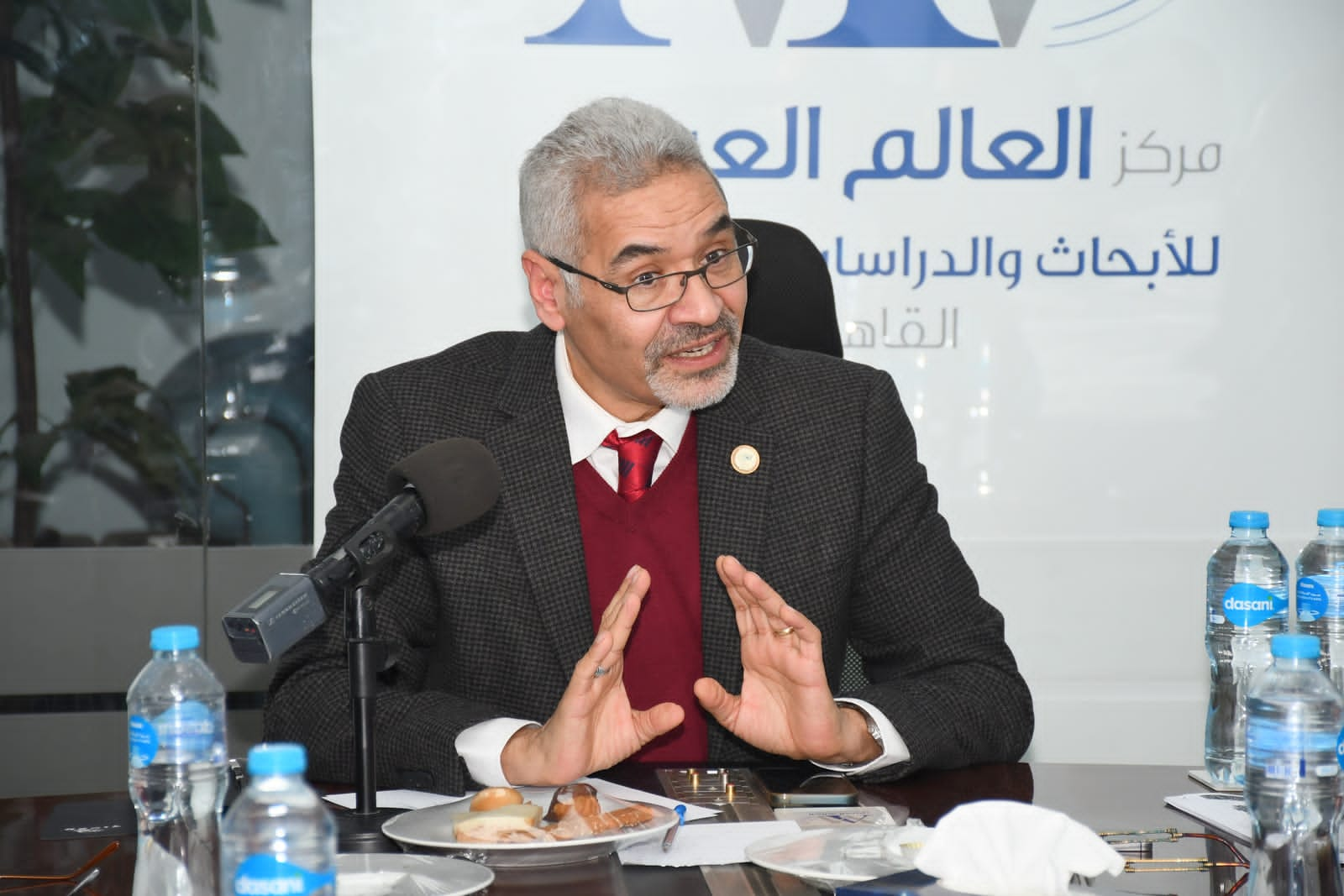On February 1st, 2023, the Arab World Center in Cairo hosted a discussion panel entitled “Demographic Transformations: The Impact of Population Crises in the Arab Region”. The main speaker of the session was Dr. Ayman Zohry, an expert in population and migration studies at the American University in Cairo. The session also included contributions from several experts and researchers specializing in different fields, including Dr. Mohammed Ezz El Arab, Dr. Mohammed Abbas Nagi, Mr. Ahmed Eleiba, Mr. Hussein Maalom, Dr. Hamdy Beshir, Mr. Mohammed Al-Feki, Mr. Karam Said, Dr. Haitham Omran, Ms. Mervat Zakaria, Ms. Nadine Al-Mahdi, and Mr. Mohammed Omar.
Dr. Zohry outlined some of the key features of demographic transformations in the Arab region during the first decades of 21st century,
Growing Populations: The population of the Arab region reached approximately 436 million in 2020, an increase from 355 million in 2010. This amounts to a total increase of 81 million people, with an average annual increase of over 8 million. A significant portion of this growth occurred in Egypt. The United Nations predicts that the population of the Arab world will reach around 520 million by 2030, a projected increase of 84 million.
Six Countries Densely Populated: Six Arab countries are considered densely populated: Egypt, Algeria, Sudan, Iraq, Morocco, and Saudi Arabia. Egypt had a population of over 100 million in 2020, compared to around 80 million in 2010, and is projected to reach 120 million by 2030. Algeria and Sudan had populations of around 44 million each in 2020, and are expected to reach 50 million and 55 million respectively by 2030. Iraq, Morocco, and Saudi Arabia follow in fourth, fifth, and sixth place respectively. The total population of these six countries is over 300 million, which is approximately 70% of the Arab world’s total population in 2020.
A Young Population: In contrast with Europe, where the elderly population (65 and above) constitutes over 20% of the total population, the Arab world has a young population, with children under the age of 15 making up 32.6% of the total population. This means that nearly one-third of the Arab world’s population is composed of children. This percentage is expected to decrease to less than 30% by 2030, due to rising infertility rates. Nevertheless, this demographic structure puts pressure on the economic resources of these countries, and affects the education, health, and basic care sectors.
“Brain Drain” : The Arab world is facing a “Brain Drain” despite its youthful population. Nearly 63% of the total population in the Arab world in 2020 is between the ages of 15 and 64, making it a “productive” population. This large base has the potential to drive economic development, as seen in countries referred to as the “Asian miracle.” However, economic and political factors in some Arab countries over the past decade have resulted in a lack of investment in this population, leading to the opposite outcome. The challenge now is to provide job opportunities to absorb the large numbers of young people entering the labor market each year.
Demographic Imbalance
Dr. Zohry refered to a number of manifestations of the demographic imbalance in the population composition in Arab countries, as follows:
The “Youth Bulge” in the Arab World: The population composition in the Arab region is characterized by a bulge representing the age group of young people. This is due to a sustained high fertility rate in previous decades, resulting in an increase in the number of children. Between 2010 and 2020, the youth population (ages 15-24) has increased, and this trend is expected to continue to 2030. This means there will be an increase in the number of young people relative to the rest of the population. The lack of adequate care for this group has a negative impact on economic and social development, and potentially on political stability.
The Syrian refugee and migration crisis: This is a result of armed conflicts and wars in some Arab countries over the past decade, leading to significant demographic challenges, particularly in densely populated countries such as Syria. This challenge is expected to persist, impacting two main areas. One area is the increase in internal migration within the country, while the other is the increase in the flow of refugees outside crisis-ridden Arab countries.
Syria serves as a prime example of the impact of political conflicts on demographics, with both internal displacement and external migration on the rise. The number of residents in Syria declined to 17.5 million in 2020 from 18 million in 2015. Approximately 6.7 million refugees are estimated to have left Syria since 2011, primarily moving to Turkey, Lebanon, Jordan, and Iraq. The number of internally displaced Syrians is also estimated at around 6.7 million. This means that about 13 million Syrian people, or over half of the Syrian population, have been affected by the Syrian war.
Successful Gulf Management of New Residents: Gulf countries are experiencing an increase in the number of non-citizens residents, and are considered “reception countries” for demographic surpluses from other countries. Although migration may lead to the mixing of different cultures and coexistence, it can also lead to problems due to major cultural differences between newcomers and citizens of some Gulf countries. However, some Gulf countries have been successful in managing the influx of newcomers, promoting mutual respect and coexistence. A prime example is the UAE model.
Successful Resettlement of Displaced Iraqis: Iraq has made great strides in resettling the displaced population within its borders after the 2014 terrorism activities of “ISIS”. Of the 6 million displaced persons, Iraq has successfully resettled nearly 5 million back to their original areas or alternative areas. Only one million remain to be resettled. However, Iraq still faces challenges with refugees outside the country, particularly in light of the growing desire for migration. For example, Iraqi migrants were among the victims in the migrant crisis between Belarus and Poland.
The Displacement Crises in Yemen and Somalia: The conflict in Yemen has caused the displacement of over 4 million people, who have had to seek refuge elsewhere within the country. This represents 23% of the total number of displaced individuals in the Arab world, estimated at 18 million. Somalia also faces a significant displacement issue with around 3 million people affected by the difficult circumstances in the country. Additionally, Sudan is grappling with renewed internal problems and an influx of migrants from other African nations.
Unclear Future
Finally, experts in population and migration studies suggest that with the large population movements, high numbers of refugees and displaced persons in the Arab region, and the persistence of crises, wars, and conflicts in some countries such as the ongoing political movement in Sudan, the worsening situation in Iraq and Syria, the continuing war in Yemen, the rise in population in heavily populated countries, and the slow growth of the region’s economies, the near future does not look promising. The current data suggests that the unstable demographic situation is likely to persist and may even deteriorate further.


